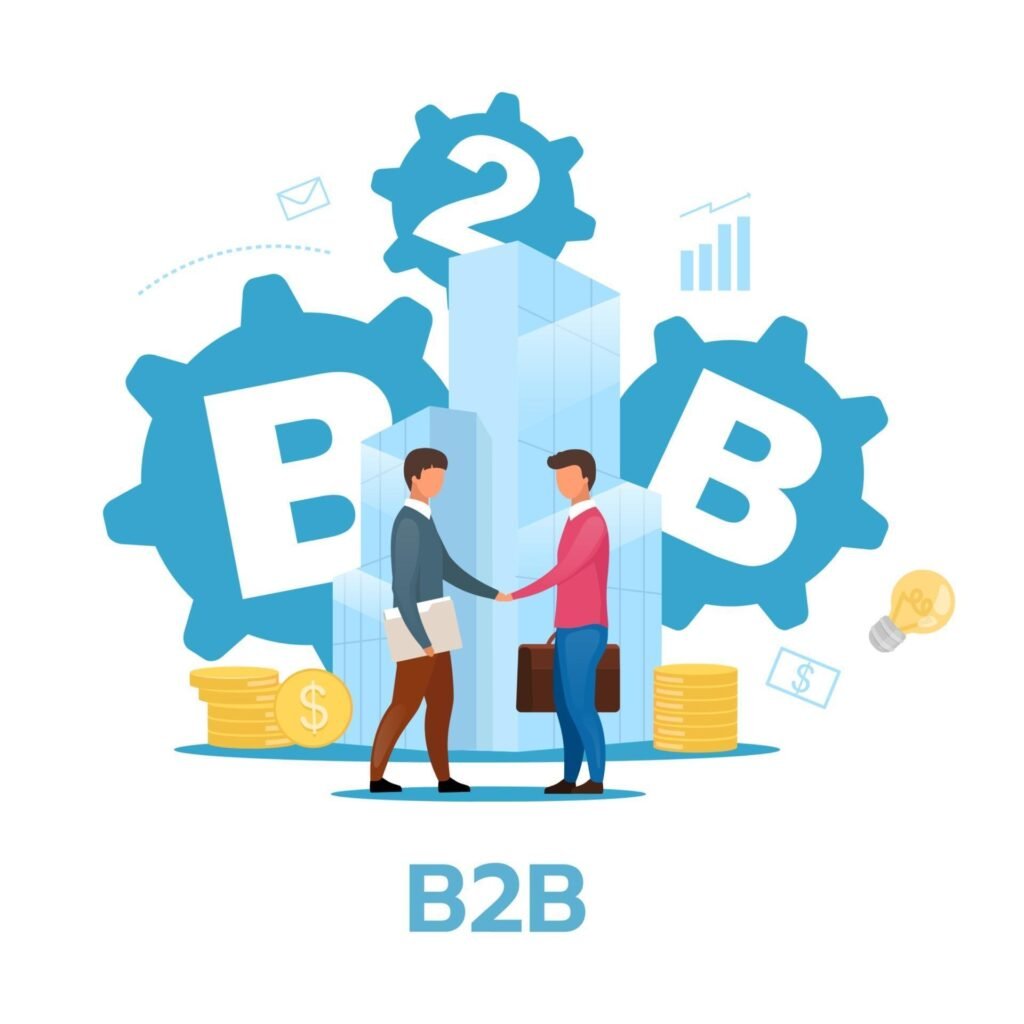Black History Month is a time to honor and celebrate the achievements, contributions, and history of Black individuals and communities. Social media provides a powerful platform to share stories, educate audiences, and engage in meaningful conversations about Black history and culture. Whether you’re a business, a nonprofit, or an individual, there are many ways to celebrate Black History Month on social media in a respectful and impactful manner. This article will explore various strategies and ideas to help you create engaging, thoughtful, and educational content for Black History Month.
Highlighting Historical Figures and Events

One of the most impactful ways to celebrate Black History Month on social media is by highlighting historical figures and events. Share stories of influential Black leaders, inventors, artists, and activists who have made significant contributions to society. This not only educates your audience but also honors the legacy of these important figures.
Research lesser-known individuals and events to provide fresh and insightful content. For example, instead of only focusing on well-known figures like Martin Luther King Jr. and Rosa Parks, include stories about individuals like Claudette Colvin, who was arrested for refusing to give up her seat on a bus nine months before Rosa Parks, or Dr. Patricia Bath, an ophthalmologist who invented a device for cataract surgery.
Create a series of posts, each focusing on a different figure or event. Use captivating visuals, such as photos, infographics, and short videos, to make your content more engaging. Provide context and background information to help your audience understand the significance of each story.
Strategic Content Planning
To maximize the impact of your content, develop a strategic plan for highlighting historical figures and events throughout Black History Month. Start by creating a content calendar that outlines the key figures and events you want to feature each week. This ensures a consistent flow of educational and engaging content.
Include a mix of well-known and lesser-known figures to provide a comprehensive view of Black history. For example, dedicate one week to civil rights leaders like Malcolm X and Angela Davis, and another week to artists and musicians like Zora Neale Hurston and Louis Armstrong. This variety keeps your content interesting and broadens the scope of historical narratives.
Engaging Visuals and Storytelling Techniques
Use engaging visuals and storytelling techniques to bring historical figures and events to life. High-quality images, infographics, and short videos can capture your audience’s attention and make your content more shareable. For example, create a short video series where each episode focuses on a different figure, using animation or archival footage to illustrate their stories.
Pair visuals with compelling storytelling. Craft narratives that highlight the personal struggles, achievements, and impacts of these individuals. Use quotes, anecdotes, and lesser-known facts to create a more intimate and engaging portrayal. This approach not only educates but also inspires your audience by showcasing the resilience and contributions of Black individuals.
Interactive and User-Generated Content
Encourage interaction and user-generated content to deepen engagement with your audience. Create interactive posts such as quizzes, polls, or challenges related to Black history. For example, you could create a quiz that tests your audience’s knowledge of historical figures and events, offering a prize for those who score the highest.
Invite your followers to share their own stories and reflections on Black history. Create a dedicated hashtag for your campaign and encourage users to post about their favorite historical figures, events, or personal heroes. Feature these user-generated posts on your social media channels to build a sense of community and amplify diverse voices.
Collaborating with Historians and Educators
Collaborate with historians, educators, and experts to provide accurate and in-depth information. Invite guest contributors to write posts or create videos about specific historical figures and events. This not only adds credibility to your content but also offers your audience insights from knowledgeable sources.
Consider hosting live sessions or webinars with these experts. Topics could include in-depth discussions on the Harlem Renaissance, the impact of the Civil Rights Movement, or the contributions of Black women in history. These sessions can be interactive, allowing your audience to ask questions and engage directly with experts.
Highlighting Local Black History
While national figures and events are essential, highlighting local Black history can make your content more relatable and impactful. Research and share stories about Black leaders, communities, and events in your local area. This could include local civil rights activists, historical landmarks, or significant local events.
Partner with local historical societies, museums, or community organizations to gather accurate information and resources. Feature these local stories on your social media channels, and encourage your followers to explore and learn more about their community’s Black history. This approach fosters a sense of pride and connection to local heritage.
Leveraging Different Social Media Platforms
Tailor your content to leverage the strengths of different social media platforms. For example, use Instagram for visually engaging posts and stories, Twitter for quick facts and updates, and Facebook for longer-form content and discussions. Each platform offers unique opportunities to engage with your audience in different ways.
On Instagram, create a visually appealing grid of historical figures, each post telling a part of their story. Use Instagram Stories to share daily facts or highlight key moments in history. On Twitter, start a thread dedicated to a particular figure or event, adding new tweets over time to build a comprehensive narrative. On Facebook, create detailed posts with additional resources and links to further reading.
Measuring Impact and Engagement
Track the performance of your Black History Month content to understand its impact and engagement. Use analytics tools to measure metrics such as likes, shares, comments, and reach. Identify which types of content resonate most with your audience and adjust your strategy accordingly.
Engage with your audience by responding to comments and messages. Show appreciation for their contributions and encourage further discussion. This not only builds a stronger community but also demonstrates your commitment to honoring and celebrating Black history.
Sharing Personal Stories and Testimonials
Personal stories and testimonials can be incredibly powerful in highlighting the impact of Black history and culture. Encourage your followers, employees, or community members to share their own experiences and reflections related to Black History Month.
Create a campaign inviting people to share their stories using a specific hashtag. Feature these stories on your social media pages to amplify diverse voices and perspectives. Personal testimonials can help humanize historical events and make the celebration of Black History Month more relatable and impactful.
Consider creating video content where individuals share their stories on camera. This adds a personal touch and can be more engaging than written testimonials alone. Ensure that the stories shared are respectful and align with the overall message of celebrating and honoring Black history and culture.
Developing a Storytelling Framework
To make your campaign more strategic, develop a storytelling framework that guides participants on how to share their stories effectively. Provide prompts or questions to help them articulate their experiences. For example, ask them to share a moment when Black history influenced their life, a lesson they learned from a Black historical figure, or how they celebrate Black culture in their daily lives.
Offer a variety of formats for storytelling, including written posts, videos, audio recordings, and photo essays. This flexibility allows participants to choose the medium that best fits their comfort and creativity, resulting in a richer diversity of stories.
Creating a Safe and Inclusive Space
Creating a safe and inclusive space for sharing personal stories is crucial. Make it clear that all stories are welcome and will be respected. Establish guidelines to ensure that the content shared is positive, respectful, and free from discrimination.
Moderate the content and interactions to maintain a supportive environment. Respond to and acknowledge each story to show appreciation for the contributions. This fosters a sense of community and encourages more people to share their experiences.
Leveraging Employee Stories
Encourage your employees to share their stories and experiences related to Black history and culture. This not only highlights the diversity within your organization but also fosters a sense of inclusion and belonging.
Feature employee stories on your social media platforms, internal communications, and company blog. This can include interviews, video testimonials, or written reflections. Highlight how these experiences have shaped their professional and personal lives and their perspectives on Black history and culture.
Partnering with Influencers and Advocates
Collaborate with influencers and advocates who are passionate about celebrating Black history and culture. Invite them to share their personal stories and testimonials on your platforms. Influencers can help reach a wider audience and bring authenticity to your campaign.
Work together to create content that resonates with both their audience and yours. This could include joint live sessions, guest blog posts, or social media takeovers. Ensure that the collaboration is genuine and aligns with your campaign’s values and objectives.
Using Stories to Highlight Current Issues
While celebrating historical achievements is important, it’s also crucial to highlight ongoing challenges and current issues faced by the Black community. Encourage participants to share stories that address these topics, providing a platform for voices that may not always be heard.
Focus on stories that inspire action and raise awareness about issues such as systemic racism, social justice, and economic inequality. Share resources and information on how your audience can get involved and support these causes. This approach not only honors the past but also contributes to ongoing efforts for change and equality.
Creating Interactive Storytelling Campaigns
Make your storytelling campaign interactive to engage your audience more deeply. Create challenges or prompts that encourage your followers to share their stories. For example, launch a “30 Days of Black History” challenge where each day features a different prompt related to Black history and culture.
Encourage participants to tag your account and use a specific hashtag to ensure their stories are seen and shared. Feature the most compelling stories on your main social media pages and thank participants for their contributions. This approach creates a dynamic and engaging campaign that fosters community involvement.
Showcasing Community Impact
Highlight how Black individuals and communities are making a difference today. Share stories of local heroes, activists, entrepreneurs, and community leaders who are continuing the legacy of Black history through their work and actions.
Create a series that focuses on these modern-day influencers and their contributions. This can include interviews, behind-the-scenes looks at their work, and testimonials from those they have impacted. This not only celebrates their achievements but also provides positive role models for your audience.
Measuring the Success of Your Campaign
Track the success of your storytelling campaign through metrics such as engagement rates, reach, and the number of stories shared. Use social media analytics tools to gather data and analyze which types of stories resonate most with your audience.
Gather feedback from participants and your audience to understand the impact of the campaign. Use this information to refine your approach and improve future campaigns. Celebrate the success and lessons learned, and share the impact of the campaign with your audience to reinforce its significance.
Collaborating with Black Creators and Influencers
Collaborating with Black creators and influencers is a great way to amplify Black voices and perspectives during Black History Month. Partner with influencers who align with your brand values and have a genuine connection to the Black community.
Work together on content that celebrates Black history, culture, and achievements. This could include Instagram takeovers, joint live sessions, or collaborative posts. Influencers can help reach a wider audience and bring authenticity to your Black History Month celebrations.
Ensure that collaborations are mutually beneficial and respectful. Compensate influencers fairly for their work and value their contributions. Authentic partnerships can lead to more impactful and meaningful content that resonates with your audience.
Identifying the Right Influencers
Finding the right influencers to collaborate with is crucial for the success of your Black History Month campaign. Look for influencers who not only have a large following but also high engagement rates. Engagement is a key indicator that their audience trusts and values their content.
Use influencer marketing platforms to identify potential collaborators. Look for influencers who consistently create content that aligns with your campaign’s goals. For example, influencers who focus on social justice, Black culture, or community activism can bring valuable perspectives to your campaign.
Evaluate the influencers’ previous collaborations to ensure their values align with your brand. Authenticity is key, so choose influencers who genuinely care about Black history and culture rather than those who might see it as just another promotional opportunity.

Crafting a Collaborative Content Plan
Develop a detailed content plan in collaboration with the influencers you partner with. This plan should outline the type of content to be created, the platforms to be used, and the schedule for posting. Ensure that the content plan highlights key themes and messages related to Black History Month.
For example, you could plan a series of posts that highlight different aspects of Black history, such as influential figures, cultural contributions, and historical events. Each influencer can bring their unique voice and perspective to these topics, creating a diverse and engaging campaign.
Include various content formats in your plan, such as blog posts, videos, Instagram Stories, and live sessions. This variety keeps the campaign dynamic and engaging for different segments of your audience.
Creating Engaging and Educational Content
Work with influencers to create content that is not only engaging but also educational. The goal is to raise awareness and educate your audience about Black history and culture in a meaningful way.
Encourage influencers to share their personal stories and experiences related to Black history. This adds authenticity and relatability to the content. For example, an influencer might share how a particular Black historical figure inspired their career or discuss their personal experiences with cultural traditions.
In addition to personal stories, create content that provides historical context and educational insights. This could include mini-documentaries, interviews with historians, or explainer videos on significant events in Black history.
Leveraging Influencer Networks
Take advantage of the networks and reach of your influencer partners to amplify your campaign. Encourage influencers to cross-promote the content on their various social media platforms, blogs, and newsletters. This not only extends the reach of your campaign but also introduces your brand to new audiences.
Consider organizing joint events, such as live Q&A sessions or panel discussions, featuring multiple influencers. This can create a buzz around your campaign and attract a larger audience. For example, a live discussion about the impact of Black culture on modern art and music can draw significant attention and engagement.
Measuring the Impact of Collaborations
Track the performance of your collaborations to understand their impact. Use metrics such as engagement rates, follower growth, and reach to evaluate the success of the campaign. Analytics tools can provide insights into which content resonated most with your audience and which influencers drove the most engagement.
Gather feedback from the influencers about their experience working with your brand. This feedback can provide valuable insights into how to improve future collaborations and build stronger relationships.
Share the results of the campaign with your audience and stakeholders. Highlight the positive impact of the collaborations and the key learnings from the campaign. This transparency not only builds trust but also showcases your commitment to celebrating Black history in a meaningful way.
Building Long-Term Relationships
Rather than viewing collaborations as one-off events, focus on building long-term relationships with Black creators and influencers. These ongoing partnerships can lead to more authentic and impactful content over time.
Engage with influencers beyond Black History Month. Support their initiatives, share their content, and involve them in other campaigns throughout the year. This continuous engagement shows your genuine commitment to supporting Black voices and perspectives.
Develop a community of influencers who regularly collaborate with your brand. This community can provide a valuable network for brainstorming ideas, creating joint content, and amplifying each other’s work.
Supporting Influencers Beyond Collaborations
Support Black influencers and creators beyond the scope of your collaborations. Share their content, recommend them to other brands, and provide platforms for them to showcase their work. This support can help build a more inclusive and diverse influencer community.
Consider setting up a fund or scholarship to support emerging Black creators. This can help them develop their skills, grow their platforms, and gain more visibility. By investing in the future of Black creators, you contribute to the sustainability and growth of diverse voices in the influencer space.
Educating Your Audience with Informative Content

Use your social media platforms to educate your audience about Black history, culture, and current issues. Create informative posts that provide historical context, highlight significant achievements, and address ongoing challenges faced by the Black community.
Consider creating a content calendar for Black History Month that includes a mix of posts such as historical facts, quotes from influential Black figures, and educational resources. Use various formats like infographics, carousels, and videos to keep your content diverse and engaging.
Invite experts and scholars to share their knowledge through guest posts, live Q&A sessions, or webinars. This adds credibility to your content and provides your audience with valuable insights from knowledgeable sources.
Developing Deep-Dive Educational Series
One way to educate your audience effectively is by developing deep-dive educational series that explore specific topics in depth. Instead of brief posts, create comprehensive series that take your audience on a journey through various aspects of Black history and culture.
For example, you could create a weekly series titled “Unsung Heroes of Black History” where each week you spotlight a different, lesser-known figure who made significant contributions to society. Provide detailed narratives, context, and visual aids to make these stories compelling and informative.
Another idea is a “Black Innovators in Science and Technology” series that highlights the contributions of Black scientists and inventors. Each post can include historical context, the individual’s achievements, and the impact of their work on modern technology.
Interactive Educational Content
Make your educational content interactive to increase engagement and learning. Use interactive tools such as quizzes, polls, and interactive infographics that allow your audience to test their knowledge and learn in an engaging way.
For example, create a “Black History Month Quiz” that covers various topics, from historical events to cultural contributions. This can be a fun and educational way for your audience to engage with your content. Offer small incentives, like shout-outs or digital badges, to encourage participation.
Interactive timelines can also be a great tool. Create a digital timeline of significant events in Black history, allowing users to click on dates to learn more about each event. This visual and interactive approach can make learning more engaging and memorable.
Collaborating with Educational Institutions
Partner with educational institutions such as universities, libraries, and museums to enhance the credibility and depth of your content. These institutions often have rich resources and expertise that can enrich your educational posts.
For instance, collaborate with a university’s history department to develop a series of posts about the Civil Rights Movement. You could also partner with a museum to share exclusive content, such as virtual tours of exhibits related to Black history.
Offer to co-host educational webinars or live sessions with these institutions. This not only provides high-quality content for your audience but also helps you reach a wider audience through the institution’s followers and networks.
Leveraging User-Generated Content
Encourage your audience to share their own educational content related to Black history and culture. Create campaigns that invite them to share historical facts, personal stories, or reflections on Black history.
For example, launch a campaign with a hashtag like #TeachMeBlackHistory, where followers can share lesser-known facts or stories they’ve learned about Black history. Feature the best submissions on your social media channels, providing credit to the contributors.
This user-generated content not only enriches your educational efforts but also builds a sense of community and shared learning among your followers.
Utilizing Different Content Formats
Diversify the content formats you use to educate your audience. Different formats can cater to different learning styles and preferences, making your educational content more accessible and engaging.
Create a mix of written articles, videos, podcasts, and infographics. For example, produce a series of short educational videos that explore different themes each week, such as “Black Women in History” or “The Influence of Black Music on Modern Culture.”
Podcasts can be a powerful tool for in-depth discussions. Start a Black History Month podcast series where you interview historians, activists, and cultural figures about various aspects of Black history and culture.
Providing Actionable Educational Resources
In addition to sharing informative content, provide actionable resources that your audience can use to further their own education. Curate lists of books, documentaries, podcasts, and online courses about Black history and culture.
Create downloadable resources such as reading lists, study guides, or infographics that your audience can share and use. For example, develop a comprehensive Black History Month reading list with summaries and recommendations for books that cover various topics and perspectives.
Encourage your audience to participate in local events, virtual tours, or webinars related to Black history. Provide links and information about these events, making it easy for your followers to get involved and learn more.
Measuring the Impact of Educational Content
To ensure your educational efforts are effective, measure the impact of your content. Use social media analytics tools to track engagement metrics such as likes, shares, comments, and reach. Analyze which types of educational content resonate most with your audience.
Gather feedback through surveys or direct interactions to understand how your audience perceives the educational content. Ask them what topics they found most interesting, what they learned, and what they would like to see more of in the future.
Use this data to refine your content strategy, focusing on the formats and topics that generate the most engagement and provide the most value to your audience.
Conclusion
Celebrating Black History Month on social media provides a unique opportunity to honor the rich legacy and contributions of Black individuals and communities. By strategically crafting and sharing content, you can educate, inspire, and engage your audience in meaningful ways. Highlighting historical figures and events, sharing personal stories and testimonials, collaborating with Black creators and influencers, and providing informative educational content are all powerful approaches to making a significant impact.
As a startup founder, leveraging these strategies can not only elevate your brand but also demonstrate your commitment to diversity, inclusion, and social responsibility. By fostering genuine relationships, supporting Black voices, and creating a platform for education and celebration, you contribute to a more inclusive and informed society.
Read Next:
- The Importance of Startup SEO Budgeting for Business Growth
- Using Google Autocomplete for Startup Keyword Insights
- Keyword Research for Startup Webinars: Driving Registrations
- Startup SEO Keyword Trends: Predictions for Future Search Behavior
- Keyword Research for Startup Email Marketing: Boosting Open Rates






















Comments are closed.